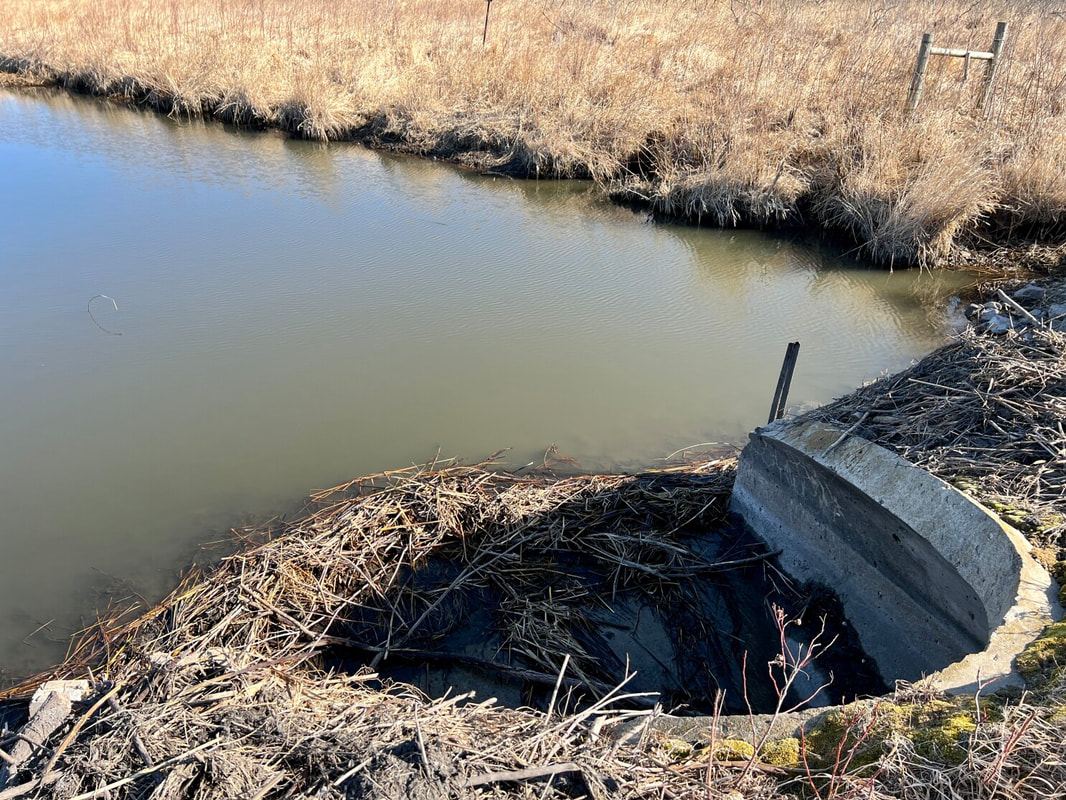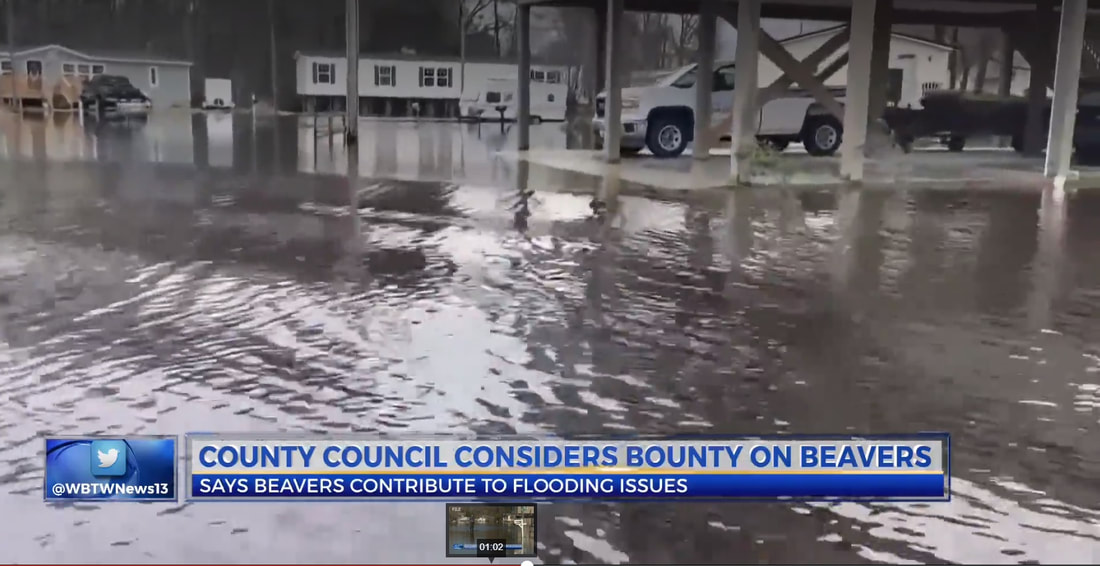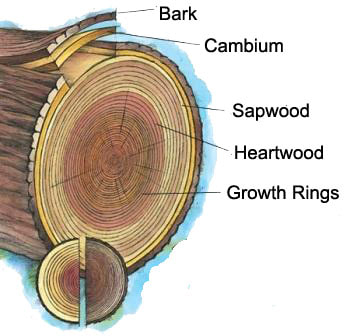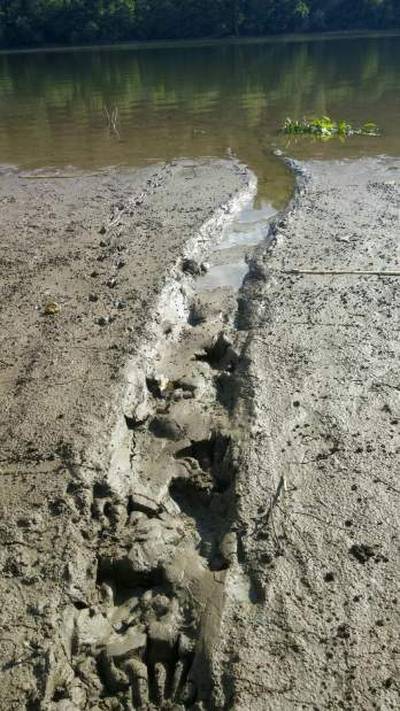|
As a Mechanical Engineer myself, I have a special appreciation for beavers. No animal, other than man, modifies their environment as much as beavers do. Humans have long had a love/hate relationship with beavers. In the wild, the provide valuable services by keeping small trees trimmed, creating ponds that sustain wildlife through droughts, and provided valuable fur and tasty meat for early settlers. In close proximity to human populations, they can create serious problems. They dam up drainage waterways flooding farmland and neighborhoods. Their habit of cutting down large mature trees make them vey unpopular with homeowners, pecan farmers, etc.
Beavers need deep water to float sticks and branches to their food stockpiles, and to keep the entrance to their dens underwater. The create very ingenious dams from mud, sticks, cattails, etc. to dam up the water. They continue to build it higher and wider until the the water lever meets their needs. One dam in the Birch Mountains in Canada is half a mile long and creates a pond large enough to be seen from space! It is not known how long it has been there and is so remote, that it wasn't discovered until 2009 when scientists were studying satellite images. Closer to home, beavers dam up culverts intended to carry flood waters away from human habitation, and to manage runoff. Unfortunately, this can lead to creeks and drainage ditches backing up into neighborhoods and farmland. Proper management of beavers and beaver dams is necessary to prevent flooding. Tree damageBeavers are 100% vegetarian. They eat a lot of pond weeds and aquatic vegetation, but they are most recognized for eating twigs and trees. It is commonly believed that beavers feed on wood. That is technically incorrect. Beavers feed on the layer between the wood of the tree and the outer bark, termed the Cambium layer. This is the live and growing part of the tree. It contains high levels of sugar and other nutrients necessary for the tree's growth. Some beavers, especially young ones, chew the cambium layer off of standing trees rather than cutting them down. If they remove a complete ring of bark from around the tree, it will die standing. Other beavers, especially older ones, cut the entire tree down to get to the cambium layer of the branches. The beavers then cut the trunks and limbs into manageable pieces, eat what they can, and float the leftovers to their stockpile. Here the branches are shoved into the mud and kept fresh so that the beavers will have food accessible under the ice all winter. Pecan orchards are particularly vulnerable. It can take a pecan tree up to 10 years to become productive, but a beaver can take even a large one down in a night or two. Signs that beavers are presentDuring the summer months, beavers don't leave much sign. They are primarily eating pond weeds and tubers, not trees, and spend very little time on land. We recently cleaned one local lake that had almost no sign around it. I saw one footprint and decided to set some traps. We wound up taking 10 beavers from that lake! In addition to the obvious tree chewing, there are a number of signs that beavers are present. For an animal that can weigh up to 70 lbs, beavers leave surprisingly light footprints. Their front feet can be difficult to distinguish from raccoon tracks and their back feet are enormous, often the size of a man's hand, and are webbed. This creates a "snowshoe" effect and there can be little to no depression in the mud. However, when they are present, they are easily identifiable and a clear indication that there are beavers present. Beavers are very territorial and mark their territory by piling up a mound of mud and vegetation on the bank at the water's edge and spraying it with a secretion from a gland under their tail. This musky smelling secretion can be smelled for quite some distance and warns other beavers to stay away. Often when I approach a pond, the smell of beaver castor is very strong and a positive indication that there are beavers living in the pond. The final indication that you may be hosting a colony of beavers, is the presence of slides. Beavers are creatures of habit and will enter and exit the water in a convenient place, often leaving a slick muddy slide into the water. If you have a beaver problem, or if you are not sure if you have a beaver problem, contact Predator Impact at (918) 397-4091 and we will be happy to help you assess the problem, and to determine an appropriate solution.
0 Comments
Leave a Reply. |
AuthorMark Runnels is a professional engineer and owner of Predator Impact, LLC. Archives
May 2024
Categories |

















 RSS Feed
RSS Feed